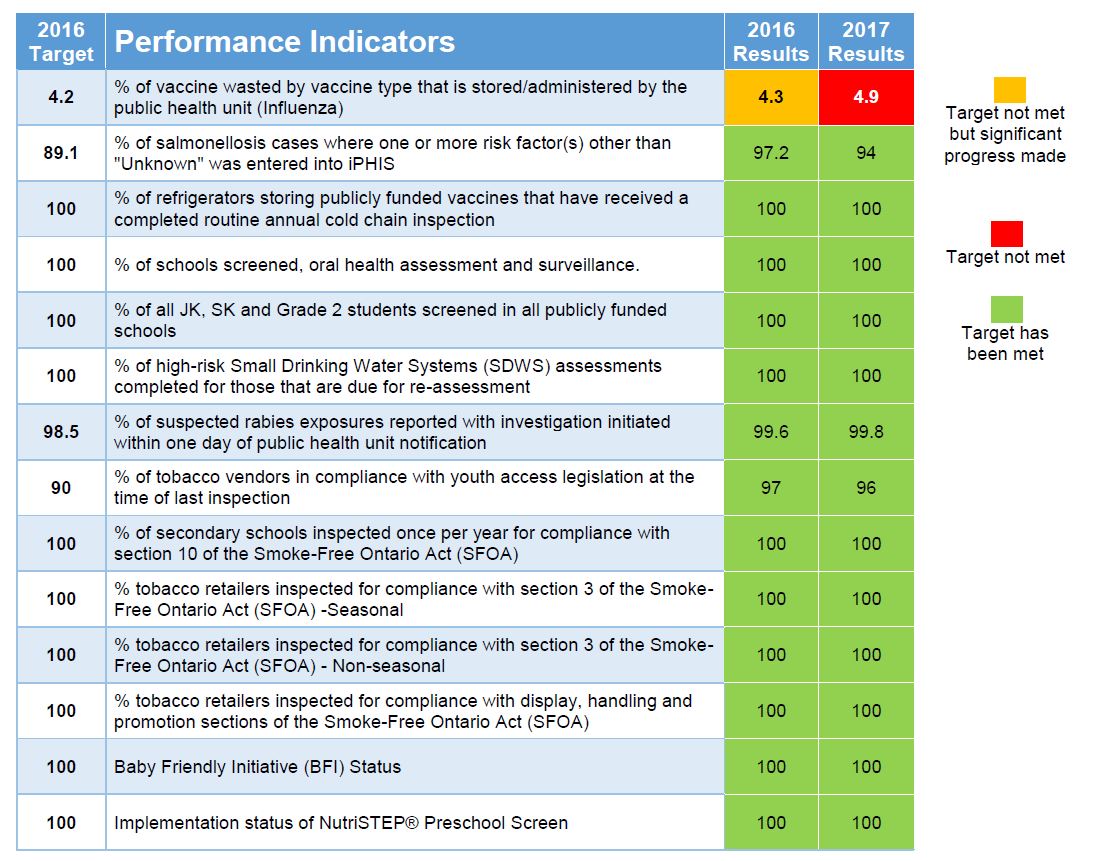The first provincial Accountability Agreement came into effect January, 2011. The intent of the Accountability Agreement is to move all boards of health toward improved performance in key areas of health protection and health promotion. The Agreement includes performance indicators based on the Ontario Public Health Standards.
Given the current state of transformation within the public health sector, the Ministry of Health and Long Term Care’s (MOHLTC) suite of indicators for the 2017 Public Health Funding and Accountability Agreement has been reduced to an essential set of monitoring indicators. But to augment these measures, the SMDHU has chosen to report on the 2016 MOHLTC Performance Indicators as part of its 2017 performance report to the Board of Health and the public.
2017 Year-end Accountability Agreement Results*

*subset of all indicators – only includes those requiring year-end reporting.
The MOHLTC sets targets for achievement which all Ontario health units are expected to achieve. If targets are not achieved, health units may be required to submit a performance report, outlining the cause of the issue and the steps that the Board of Health plan to undertake in order to improve performance.